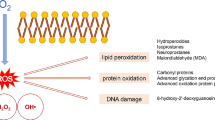Abstract
Carbon monoxide (CO) is associated with central nervous system toxicity. However, evidence also indicates that CO can be protective, depending on its concentration. To determine if CO can be neuroprotective after ischemic brain injury, we subjected mice to transient middle cerebral artery occlusion and exposed them to different concentrations of CO. We found that in mice, low CO levels protected the brain from injury following 90-min transient focal ischemia and 48 h of reperfusion. When inhalation of 125 or 250 ppm CO began immediately at the onset of reperfusion, total hemispheric infarct volume was reduced by 32.1 ± 8.9% and 62.2 ± 14.4%, respectively; with an extended therapeutic window of 1–3 h after ischemia, CO inhalation also attenuated infarct volume significantly. Furthermore, early CO exposure limited brain edema formation by 3.2 ± 0.8% (125 ppm) and 2.6 ± 0.3% (250 ppm). Finally, CO inhalation significantly improved neurological deficit scores at 48 h of survival time after ischemia. Transient elevation of carboxyhemoglobin levels returned rapidly to baseline when CO exposure was stopped. These findings suggest a potential application of CO to treat brain ischemic stroke.

Similar content being viewed by others
References
Benignus VA, Kafer ER, Muller KE, Case MW (1987) Absence of symptoms with carboxyhemoglobin levels of 16–23%. Neurotoxicol Teratol 9:345–348
Brunssen SH, Morgan DL, Parham FM, Harry GJ (2003) Carbon monoxide neurotoxicity: transient inhibition of avoidance response and delayed microglia reaction in the absence of neuronal death. Toxicology 194:51–63
Chen YH, Tsai HL, Chiang MT, Chau LY (2006) Carbon monoxide-induced early thrombolysis contributes to heme oxygenase-1-mediated inhibition of neointimal growth after vascular injury in hypercholesterolemic mice. J Biomed Sci 13:721–730
Chu K, Jung KH, Kim HJ, Jeong SW, Kang DW, Roh JK (2004) Diffusion-weighted MRI and 99mTc-HMPAO SPECT in delayed relapsing type of carbon monoxide poisoning: evidence of delayed cytotoxic edema. Eur Neurol 51:98–103
Doré S, Sampei K, Goto S, Alkayed NJ, Guastella D, Blackshaw S, Gallagher M, Traystman RJ, Hurn PD, Koehler RC, Snyder SH (1999) Heme oxygenase-2 is neuroprotective in cerebral ischemia. Mol Med 5:656–663
Durante W, Johnson FK, Johnson RA (2006) Role of carbon monoxide in cardiovascular function. J Cell Mol Med 10:672–686
Koehler RC, Traystman RJ (2002) Cerebrovascular effects of carbon monoxide. Antioxid Redox Signal 4:279–290
Koneru P, Leffler CW (2004) Role of cGMP in carbon monoxide-induced cerebral vasodilation in piglets. Am J Physiol Heart Circ Physiol 286:H304–H309
Leffler CW, Parfenova H, Jaggar JH, Wang R (2006) Carbon monoxide and hydrogen sulfide: gaseous messengers in cerebrovascular circulation. J Appl Physiol 100:1065–1076
Nakao A, Kimizuka K, Stolz DB, Neto JS, Kaizu T, Choi AM, Uchiyama T, Zuckerbraun BS, Nalesnik MA, Otterbein LE, Murase N (2003) Carbon monoxide inhalation protects rat intestinal grafts from ischemia/reperfusion injury. Am J Pathol 163:1587–1598
Otterbein LE (2002) Carbon monoxide: innovative anti-inflammatory properties of an age-old gas molecule. Antioxid Redox Signal 4:309–319
Shah ZA, Namiranian K, Klaus J, Kibler K, Dore S (2006) Use of an optimized transient occlusion of the middle cerebral artery protocol for the mouse stroke model. J Stroke Cerebrovasc Dis 15:133–138
Thom SR, Ischiropoulos H (1997) Mechanism of oxidative stress from low levels of carbon monoxide. Res Rep Health Eff Inst 80:1–19
Uemura K, Harada K, Sadamitsu D, Tsuruta R, Takahashi M, Aki T, Yasuhara M, Maekawa T, Yoshida K (2001) Apoptotic and necrotic brain lesions in a fatal case of carbon monoxide poisoning. Forensic Sci Int 116:213–219
Weaver LK, Hopkins RO, Chan KJ, Churchill S, Elliott CG, Clemmer TP, Orme JF Jr, Thomas FO, Morris AH (2002) Hyperbaric oxygen for acute carbon monoxide poisoning. N Engl J Med 347:1057–1067
Acknowledgments
We especially thank Khodadad Namiranian, Kathleen K. Kibler, and all members of the Doré lab for assistance in this project. This work was supported in part by grants from the National Institutes of Health NS046400 and the GEMI Fund (SD).
Author information
Authors and Affiliations
Corresponding author
Rights and permissions
About this article
Cite this article
Zeynalov, E., Doré, S. Low Doses of Carbon Monoxide Protect Against Experimental Focal Brain Ischemia. Neurotox Res 15, 133–137 (2009). https://doi.org/10.1007/s12640-009-9014-4
Received:
Revised:
Accepted:
Published:
Issue Date:
DOI: https://doi.org/10.1007/s12640-009-9014-4




